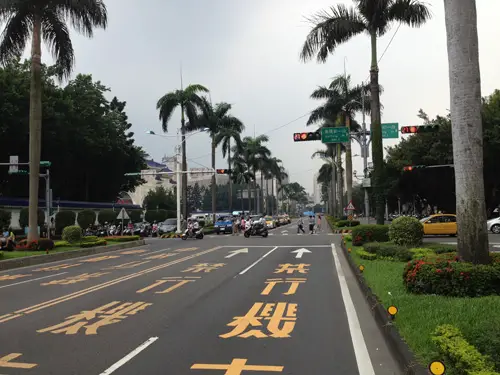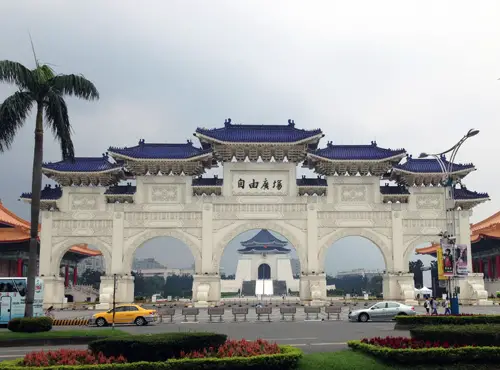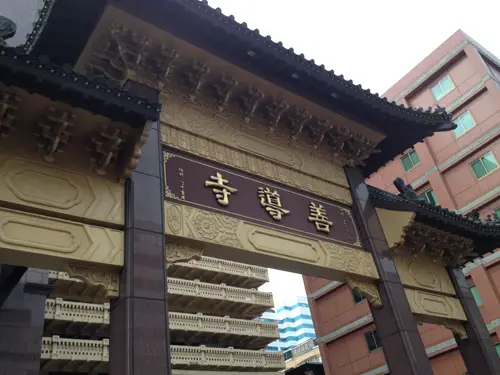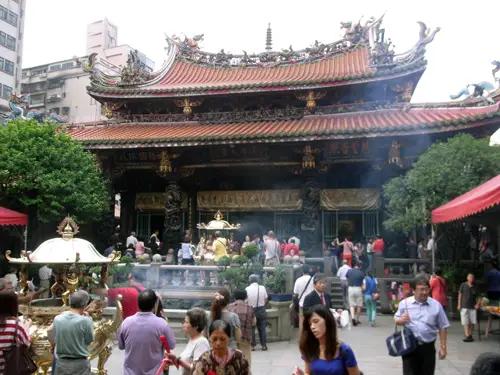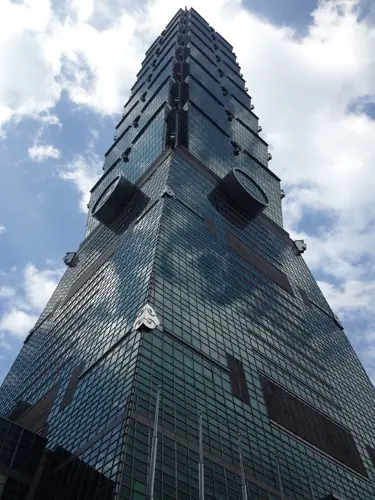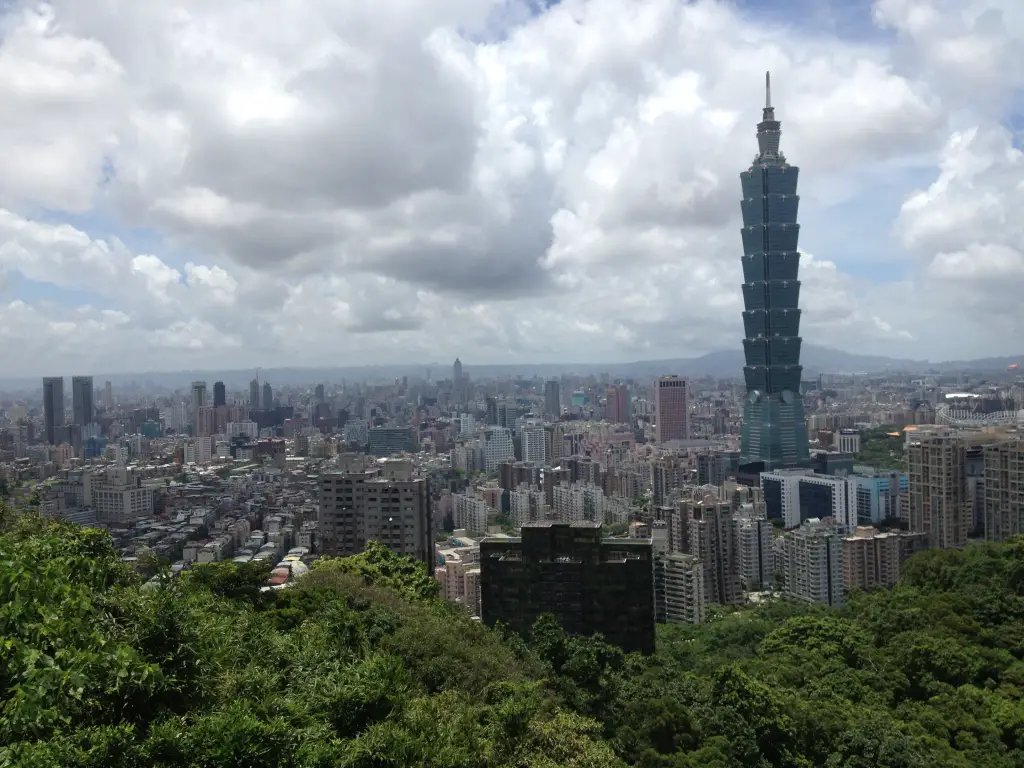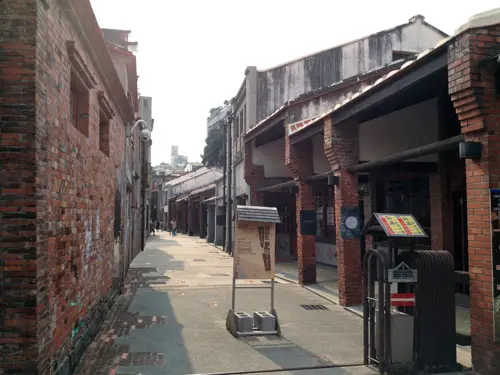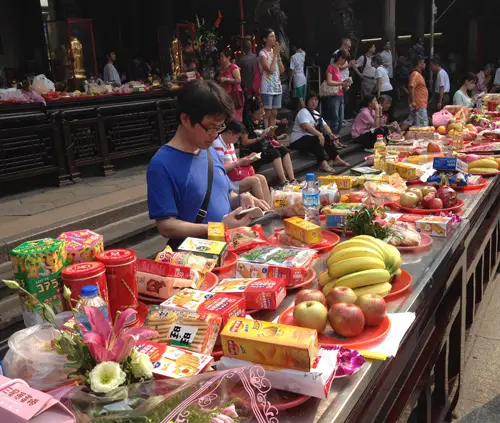Getting a visa to enter Taiwan, regardless of nationality, is not that difficult. All you need is a return travel ticket, a hotel booking and possibly proof that you have the financial means to cover your expenses for the period you wish to travel.
A direct flight from Bangkok to Taipei Taoyuan International Airport takes three and a half hours and, on arrival, you’ll have to move your watch one hour ahead. If your hotel doesn’t offer an airport pick-up service, then it’s very easy to just take a public bus or the high-speed train into the capital’s centre. As you leave the airport, make sure you stock yourself up on maps, as these will be extremely valuable in your travels around Taiwan.
Although it’s a very small destination (with an area slightly smaller than the combined areas of Nakhon-Ratchasima, Buriram and Surin) Taiwan has great things to offer: stunning mountain ranges on the east coast, a great lake in the centre surrounded by a national park, quiet and peaceful islands in the west, and white-sand beaches in the south.
Actually, one could travel the entire circumference of Taiwan, going south of Taipei City on the west coast and coming back north on the other side of the island on the east coast and not run out of things to do and see. This is quite a viable travelling plan if you’ve got the time, as Taiwan has an extremely modern, affordable, and reliable system of railways that connect the country from all cardinal directions.
After you’ve checked in at your hotel in Taipei, it’s time to explore the city. With a map of the metro in hand, you can reach every single point of interest you want by train. Luckily, all the metro maps have the major tourist attractions clearly marked next to the nearest stations so, depending on your interests, it’s easy to find your way around. My recommendation would be to explore a little bit from all the aspects of life that such a cosmopolitan city has to offer: history, religion, shopping, and the outdoors.
If you start at Taipei Main Station, an attraction in itself, then you can take the metro to your first stop at Chiang Kai Shek Memorial Hall, one of the capital’s landmarks and a must visit if you’re interested in the history of Taiwan. Chiang Kai Shek (also known as Jiang Jieshi) was an influential political and military leader who became the first leader of Taiwan in the late 1940s. You’ll need almost half a day to properly explore the Hall and the surrounding park so you might want to allocate enough time for this stop.
Then you should hop back on the metro and go to Shandao Temple, the largest Buddhist temple in Taipei. Completed in 1926 during the Japanese rule of Formosa (the historical name of Taiwan).
But, the temple that gives the best glimpse into the religious life of Taiwanese people and it’s also a very good example of Buddhist temple architecture is Longshan Temple. Most temples throughout Taiwan tend to be a “replica” of this temple, so if you’re not a big fan of visiting temples, then visiting Longshan will certainly make you feel satisfied that you’ve at least made contact with the quintessential place of Buddhist worship in Taiwan.
Temples and history aside, it’s time for shopping and exploring the modern city of Taipei. What better place to start than Taipei 101 which, between 2004 and 2010, ranked as the tallest building in the world? The tower offers a stunning view of the city and the surrounding green hills, while the adjacent mall and shopping streets are sure to make a huge hole in your purse or wallet! The indoor observation deck is on the 89th floor and the outdoor viewpoint is on the 91st floor, both offering a 360-degree panoramic view of the capital.
All these three destinations are within walking distance of their eponymous metro station. Taking the metro to Xianshan Station, not far from Taipei 101, will give you the chance to explore the forests surrounding the capital. Elephant Mountain is the place to go hiking in Taipei. After just a 20-minute hike on a well-maintained trail of steps, you’ll get a breathtaking view of the city down below with Taipei 101, towering over every temple roof, apartment building, and the traffic-filled streets. The hike is not difficult at all and the frequent resting areas and observation decks, plus the looming “shadow” of Taiwan’s tallest building, make the trip an excellent reason to climb and enjoy the sunset.
You could easily spend a full week in Taipei and not see every tourist attraction labeled on your map, but if you’re there for just a few days, make sure you consider these next four recommendations. Once you have had enough of city life, you can get a bus to Sun Moon Lake and explore the lake itself and the surrounding national parks. Then, further down the west coast, stop for a day or two in Kaohsiung, Taiwan’s second most populated city where you can enjoy all the attractions that come with a busy harbour city, including near-by Cijin Island with its black-sand beaches and lighthouse. If it’s clear-blue seas that you want, then explore the Pingu Archipelago in the Straits of Taiwan or head south for a hotter climate and white-sand beaches of Kenting.
People are under the impression that it’s very expensive to travel to most industrialized and highly-developed countries. In most instances, this is not the case and things are pretty similar with Taiwan too. While the standard of living is high, with rent prices reaching up and well beyond $US2000 per month, being in the country as a tourist doesn’t have to be that expensive. You can find clean 2 or 3-star hotels within walking distance to the metro for 1500 baht/night, you can eat street food and have a filling dinner for 150 baht, and you can travel using the excellent and cheap public transport system.
Now, obviously shopping for brand name products, travelling solely by taxi, and eating and staying in 5-star hotels will definitely impact your budget. Going out to nightclubs and bars can be expensive too, but you can always “warm up” at a street stall selling noodles and alcoholic beverages before you move on to fancier establishments.
A return ticket with THAI from Bangkok to Taipei costs approximately 15,000 baht. Just make sure you change your pocket money from Thai baht to New Taiwan Dollars (TWD) while you’re still in Thailand, preferably at Super Rich where you will get a much better deal (where the selling rate is presently at 1.075) than at any bank or airport money exchange booth.
Go to Taiwan expecting to meet very friendly people, to eat great food, to enjoy an exciting cosmopolitan life and see some excellent, breathtaking, scenery. You won’t regret the trip – and the memories you’ll bring back will stay with you forever!
A shorter version of this article was initially published in Mango Metro (September 2014, Vol.8, No.10)
